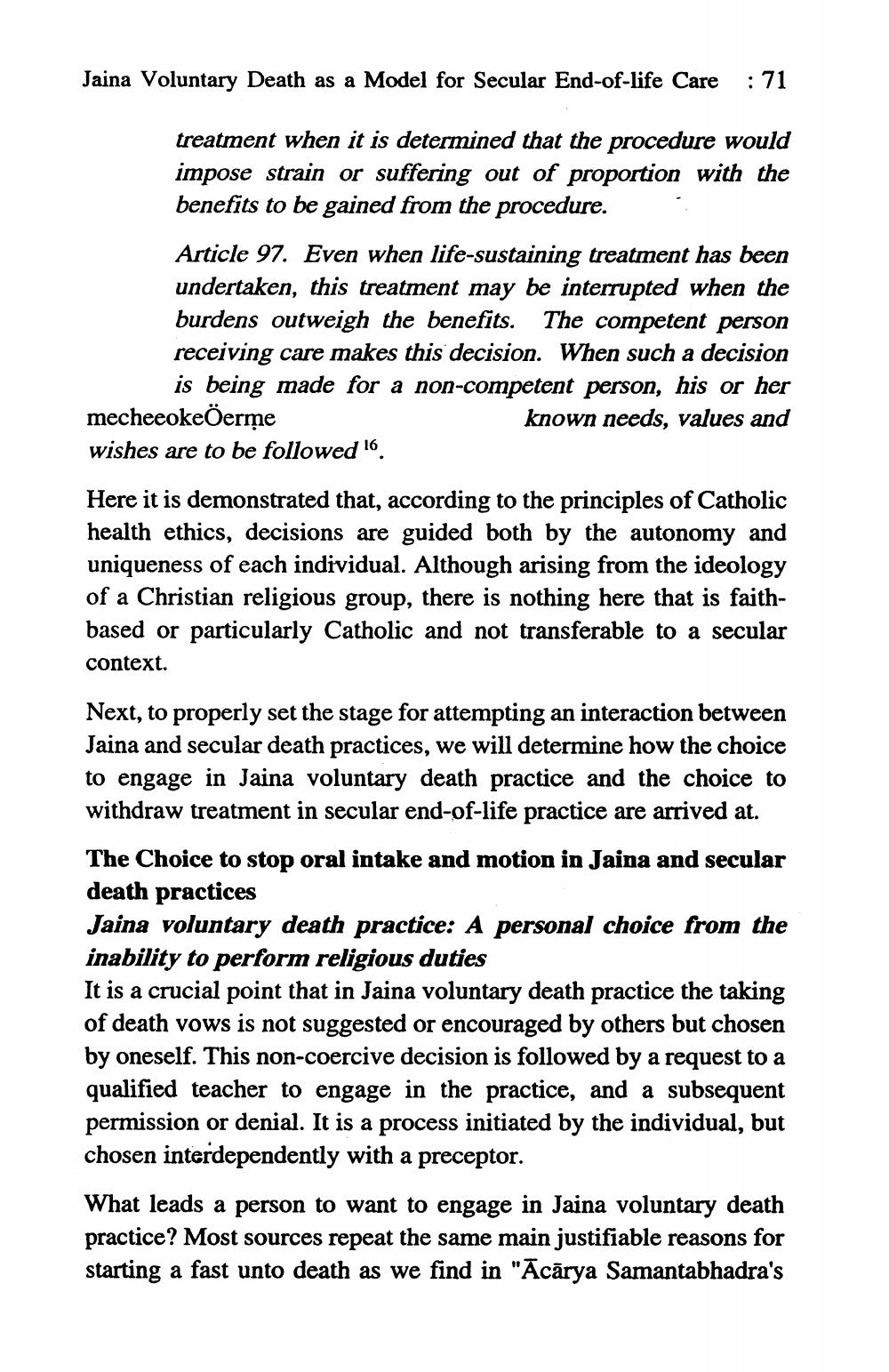________________
Jaina Voluntary Death as a Model for Secular End-of-life Care
: 71
treatment when it is determined that the procedure would impose strain or suffering out of proportion with the benefits to be gained from the procedure.
Article 97. Even when life-sustaining treatment has been undertaken, this treatment may be interrupted when the burdens outweigh the benefits. The competent person receiving care makes this decision. When such a decision
is being made for a non-competent person, his or her mecheeokeÖerme
known needs, values and wishes are to be followed 6.
Here it is demonstrated that, according to the principles of Catholic health ethics, decisions are guided both by the autonomy and uniqueness of each individual. Although arising from the ideology of a Christian religious group, there is nothing here that is faithbased or particularly Catholic and not transferable to a secular context.
Next, to properly set the stage for attempting an interaction between Jaina and secular death practices, we will determine how the choice to engage in Jaina voluntary death practice and the choice to withdraw treatment in secular end-of-life practice are arrived at. The Choice to stop oral intake and motion in Jaina and secular death practices Jaina voluntary death practice: A personal choice from the inability to perform religious duties It is a crucial point that in Jaina voluntary death practice the taking of death vows is not suggested or encouraged by others but chosen by oneself. This non-coercive decision is followed by a request to a qualified teacher to engage in the practice, and a subsequent permission or denial. It is a process initiated by the individual, but chosen interdependently with a preceptor. What leads a person to want to engage in Jaina voluntary death practice? Most sources repeat the same main justifiable reasons for starting a fast unto death as we find in "Ācārya Samantabhadra's




